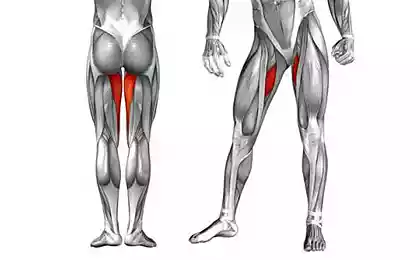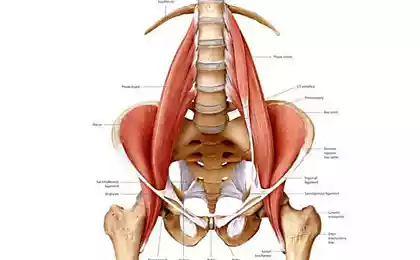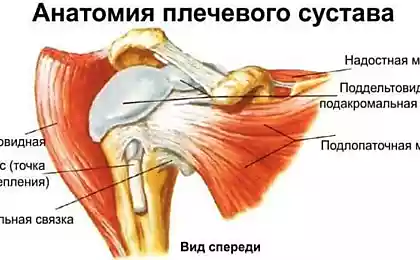262
What to choose: full-body training or exercises on individual muscle groups
575150
Everyone who is serious about training sooner or later faces a fundamental choice: train the whole body in one session or divide the load into muscle groups. This question does not have a clear answer, since the optimal approach depends on many factors: from your goals and experience to the available time and features of recovery. Let us deal with this dilemma from a scientific point of view and find practical solutions for different situations.
The Science of Training Volume and Frequency
Modern research suggests that a key factor in muscle growth is weekly exercise volume. A 2017 meta-analysis published in Sports Medicine showed that 10 to 20 working approaches per muscle group per week are required for optimal muscle growth. The frequency of training plays no less important role: training each muscle group 2-3 times a week shows better results than a single weekly load.
Professor Brad Schenfeld of Lehman University conducted a study comparing the effectiveness of full-body training with separate workouts. The results showed that with equal weekly volume, full-body training shows an advantage for beginners and mid-level athletes, while advanced athletes can benefit more from separate programs.

Full body training: advantages and disadvantages
Advantages of full-bodied training:
High frequency of stimulation: Each muscle group receives a load 3-4 times a week, which provides a constant anabolic stimulus. This is especially important for natural athletes, whose protein synthesis returns to baseline levels 48 to 72 hours after training.
Time efficiency: In 45-60 minutes, you work through all the major muscle groups. This is ideal for people with limited time or unstable schedules.
Hormonal response: Whole body training causes a more pronounced release of growth hormone and testosterone due to the more muscles involved.
Functionality: Multi-joint exercises, which form the basis of such training, are more consistent with the natural movements of a person.
Disadvantages: Limited volume for each muscle group per workout can be a problem for advanced athletes. Also, high intensity can lead to rapid fatigue, which reduces the quality of exercise at the end of the workout.
Separate training: when specialization is more important
Separate training, or split programs, allow you to focus on specific muscle groups, providing them with the maximum amount of load. A classic example is the push-pull-leg program, where the exercises are divided according to the biomechanical principle.
Advantages of separate training:
High volume: The ability to perform 15-25 sets per muscle group per training, which is critical for advanced athletes.
Specialization: You can focus on the lagging muscle groups or work them out from different angles.
Best recovery: While one group of muscles rests, the other receives a load, which allows you to train more often.
Disadvantages: It takes more time per week, there is a risk of an imbalance in muscle development, and skipping a workout can disrupt the entire program.

Practical application: how to choose your approach
Comparative table of approaches
Whole body training Criterion Separate workout time 45-60 minutes 60-90 minutes Frequency per week 3-4 times4-6 Best for beginners No Suitable for advanced Limited Flexibility Graphics High Low
Practical recommendations
For beginners (0-1 year of training): Choose a full body workout 3 times a week. Focus on basic exercises: squats, deadlift, bench press, pull-ups, push-ups on bars. This is enough for the initial adaptation and learning of the correct technique.
For average athletes (1-3 years): Combine approaches. For example, perform full-body workouts 2 times a week and one specialized workout for lagging muscle groups. This will ensure an optimal balance between frequency and volume.
For advanced (3+ years): Separate training is preferred. Use schemes such as “top-down”, “push-punch-legs” or more detailed specialization in muscle groups.
Real examples and success stories
Consider the case of Mikhail, a programmer from Kiev. Working 10-12 hours a day, he could visit the hall only 3 times a week. The transition from separate training to the whole body program allowed him to increase the results in basic exercises by 20-30% in 6 months and gain 4 kg of quality muscle mass.
The opposite example is Anna, a fitness trainer with 5 years of experience. She reached a plateau by training full-body, and switching to a 6-day separate program allowed her to develop lagging deltoid muscles and improve her figure proportions.
Hybrid Approaches: The Best of Two Worlds
Modern training does not require a strict choice between the two approaches. Periodization of training allows you to combine methods depending on goals and life circumstances. For example, you can use full-body training during periods of high employment, and switch to separate programs during holidays or in preparation for competitions.
Another effective approach is wave periodization, where you alternate 4-6 weeks of full-body training with 4-6 weeks of separate programs. This avoids adaptation and supports continuous progress.
Conclusion: Find your way
The choice between full-body training and separate programs should not be dogmatic. The best approach is one that you can do consistently and with pleasure. Start with full-body training if you’re a beginner, and gradually experiment with different schemes as the experience grows. Consistency is more important than a perfect program, and any training is better than no training.
Listen to your body, monitor your progress, and don’t be afraid of change. Your body adapts to any load, so it’s important to change approaches periodically to keep progressing. Success in training comes not from following other people’s recipes, but from understanding the principles and their competent application to your individual characteristics.
Glossary
Training volume
The total amount of work done per workout or period of time is usually measured in approaches, repetitions, or weight lift.
Protein synthesis
The biological process of creating new protein structures in muscles, which is the basis of muscle mass growth.
Anabolic stimulus
Impact on the body, which triggers the processes of growth and restoration of muscle tissue.
Multi-joint exercises
Exercises that involve several joints and muscle groups at the same time (squats, deadlift, bench press).
Split programme
A training program in which different muscle groups train on different days.
Periodization
Systematic planning of training with changes in intensity, volume and other parameters to achieve peak shape.
plateau
A period in training when progress stops despite continuing training.
This article is based on current scientific research and practical experience. Remember that an individual approach is always preferable to universal recommendations. Before starting any training program, it is recommended to consult a qualified trainer or doctor.
10 Signs You and Your Girlfriend Have Been Roommates
The Horrors of Your Mind: How to Deal With Irrational Inner Fear























